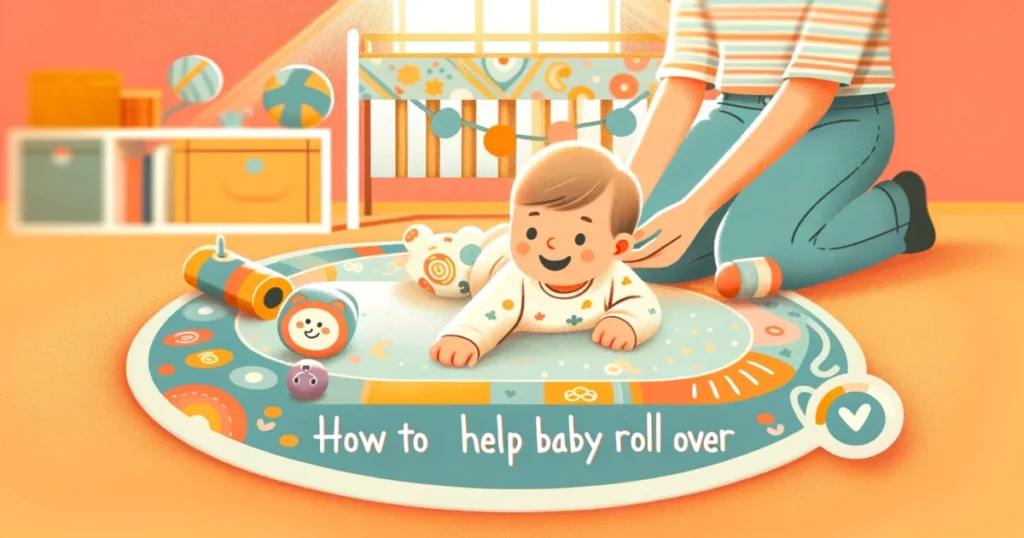Introduction:
Bedtime can sometimes feel like a never-ending journey, especially when your little one keeps popping out of bed for one reason or another. We call this the ‘false start bedtime’ routine. It happens when kids refuse to go to sleep and keep coming back for more, whether it’s another story, a drink of water, or just to chat. While these interruptions can really try a parent’s patience, there are easy ways to make bedtime smoother for both you and your child.

Definition of False Start Bedtime:
False start bedtime is when kids have a hard time settling down for sleep, especially during their preschool and early school years. It’s like a series of stops and starts that make bedtime last longer than it should. This can be frustrating for both parents and kids. False starts might include asking for more stories or suddenly feeling wide awake when it’s time to sleep.
Causes of False Start Bedtime:
There are several reasons for False Start Bedtime and why children may struggle with settling down for bedtime:
| Causes | Description |
|---|---|
| Delayed Sleep Association | Sometimes, kids connect bedtime with fun activities like watching TV or playing games. This association can make them resistant to going to bed when it’s time to sleep that’s cause false start bedtime. |
| Fear of Missing Out | Children may worry that they’ll miss something exciting if they go to sleep. This fear of missing out can lead to anxiety and reluctance to go to bed at the designated time. |
| Separation Anxiety | Some children experience anxiety about being away from their parents or caregivers at bedtime. This fear of separation can make them resistant to going to bed or cause frequent waking during the night. |
| Overstimulation | Engaging in stimulating activities, such as playing active games or using electronic devices, before bedtime can make it difficult for children to wind down and relax, leading to restless sleep. |
| Lack of Consistent Bedtime | Inconsistent bedtime schedules can confuse children’s internal clocks, making it harder for them to settle down at night. Without a regular routine, they may struggle to transition to sleep. |
| Physical Discomfort | Physical discomfort, such as hunger, discomfort from pajamas or bedding, or needing to use the bathroom, can disrupt children’s ability to fall asleep and result in frequent awakenings throughout the night. |
Simple Solutions for False Start Bedtime:
Bedtime can be a challenging time for both children and parents, but there are several effective strategies that parents can employ to make false start bedtime easier to manage. These solutions not only help children develop healthy sleep habits but also promote a more peaceful bedtime routine for the whole family.
Stick to a Routine:
Establishing a consistent bedtime routine is essential for helping children transition from the busyness of the day to a calm and relaxed state conducive to sleep. Create a predictable sequence of activities, such as taking a bath, brushing teeth, reading a story, and saying goodnight. Consistency in the bedtime routine helps signal to children that it’s time to wind down and prepare for sleep.
Set Clear Rules:
Communicate clear expectations with your child about bedtime rules and boundaries. Let them know how many stories they can have, how many times they can get out of bed, and what behavior is expected at bedtime. Setting and enforcing these rules consistently helps establish a sense of structure and predictability, which can reduce resistance and false starts.
Comfort and Reassure:
Address any fears or anxieties your child may have about bedtime. Take the time to listen to their concerns and provide reassurance. Offer comfort items such as a favorite stuffed animal, blanket, or nightlight to help them feel safe and secure in their bedroom. Creating a soothing and comforting sleep environment can help alleviate bedtime worries and minimize false starts.
Calm Down Before Bed:
Avoid stimulating activities or screens in the hour leading up to bedtime. Engage in calming activities such as reading a book, listening to soft music, or practicing relaxation techniques together. This quiet time helps your child unwind and relax, making it easier for them to transition to sleep without false starts.
“One More Thing” Rule for False Start Bedtime:
Anticipate and address common bedtime requests by implementing a “one more thing” rule. Encourage your child to get everything they need before bedtime, whether it’s a drink of water, a trip to the bathroom, or one last hug. Once they’re in bed, remind them that it’s time to sleep and there are no more exceptions. This helps minimize unnecessary disruptions and false starts once bedtime begins.
Stay Cool:
It’s natural for children to test boundaries, especially when it comes to bedtime. Stay calm and patient in your responses, even if your child’s false starts are testing your patience. Reacting with frustration or anger will only escalate the situation and make it harder for your child to settle down. Instead, remain calm and gently redirect your child back to bed, reinforcing the bedtime rules with patience and consistency.
Create a Cozy Environment:
Make your child’s bedroom a comfortable and inviting space for sleep. Ensure their bed is cozy with soft blankets and pillows, and adjust the room temperature to a comfortable level. Dim the lights and eliminate any distractions that may interfere with sleep, creating an environment conducive to relaxation and restful sleep.
Offer Choices while False Start Bedtime:
Give your child some control over their bedtime routine by offering choices within predetermined limits. Let them choose their pajamas, select a bedtime story, or decide on a comforting bedtime ritual. Providing opportunities for autonomy and decision-making can empower your child and increase their cooperation at bedtime.
Use Positive Reinforcement:
Acknowledge and praise your child when they follow the bedtime routine without any false starts. Positive reinforcement can motivate and encourage good behavior, making bedtime a more positive and enjoyable experience for everyone involved. Offer praise, hugs, or small rewards to reinforce your child’s efforts to comply with bedtime rules and routines.
Be Patient:
Changing bedtime habits and establishing new routines takes time and patience. Be consistent in your approach and give your child the opportunity to adjust to the new expectations gradually. Celebrate small victories and progress along the way, and remember that with time and persistence, bedtime should become smoother and more peaceful for both you and your child.

Facts and Figures for False Start Bedtime:
Here are some important things to know about False Start Bedtime:
- Preschool-aged children (3-5 years old) need about 10-13 hours of sleep each night, while school-aged children (6-13 years old) should aim for 9-11 hours. Getting enough sleep is crucial for children’s growth, development, and overall well-being.
- Lack of sleep in children has been linked to difficulties in concentration, behavior problems, and decreased academic performance. Ensuring that children get enough sleep each night is essential for their cognitive function, emotional well-being, and success in school.
- A study published in the Journal of Sleep Research discovered that children who follow consistent bedtime routines tend to fall asleep faster and have fewer awakenings during the night. Establishing a regular bedtime routine can help improve the quality and duration of children’s sleep, making bedtime easier for both parents and children.
FAQs (Frequently Asked Questions):
Here are some common questions about managing bedtime struggles:
Q: How to stop false starts at bedtime?
To stop false start at bedtime, it’s helpful to establish a consistent bedtime routine, set clear boundaries, address any fears or anxieties your child may have, minimize stimuli before bed, and stay calm and patient in your responses.
Q: What causes false starts at bedtime?
False start at bedtime can be caused by various factors, including delayed sleep association, fear of missing out, separation anxiety, overstimulation, lack of consistent bedtime, and physical discomfort.
Q: What is a false start bedtime?
A false start bedtime refers to a common phenomenon where children resist going to bed and repeatedly come back for more, leading to delays and disruptions in the bedtime routine. This may involve requests for additional stories, drinks of water, or other distractions that prolong the bedtime process.
Q: My child always asks for one more story before bedtime. How can I break this habit?
To help break this habit, try setting a limit on the number of stories allowed before bed and stick to it consistently. You can also try incorporating storytelling into other parts of the day to fulfill your child’s desire for stories, such as during quiet playtime or before naptime.
Q: What should I do if my child repeatedly gets out of bed after I’ve put them to sleep?
If your child repeatedly gets out of bed after you’ve put them to sleep, remain calm but firm in your response. Escort your child back to bed without engaging in conversation or giving in to their requests. Consistency is key in reinforcing bedtime boundaries, so continue to gently but firmly guide your child back to bed each time they get up.
Final Thoughts on False Start Bedtime:
So, overcoming false start bedtime challenges is possible with patience, consistency, and simple strategies. By establishing a bedtime routine, setting clear boundaries, addressing fears, and staying calm, parents can streamline the bedtime process. With these solutions, bedtime can become a peaceful and enjoyable time for both parents and children alike.

Do you want to know more about Parenting ? Click here to read our easy tips on our blog!
- 14 Month Sleep Regression – Signs, Causes, and Parenting Advice
- Ergo Baby Carrier: A Must-Have Essential for Every New Parent
- Parenting with Love and Logic: Practical Tips for Modern Parents
- Reusable Water Balloons for Kids – Tips, Tricks, and Care
- Top 10 Road Trip Activities for Kids: Toddler Road Trip Activities


